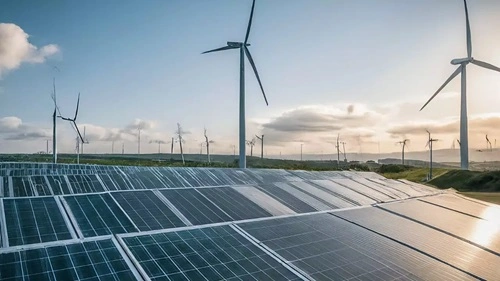The Indian automotive industry is on the cusp of a significant transformation, with green investments projected to escalate 13.4 times to ₹4.1 lakh crore by 2030, according to CRISIL’s Infrastructure Yearbook 2025.
Investment Projections and Segmentation

CRISIL’s analysis anticipates substantial growth across various segments:
- Passenger Vehicles (PVs): Electrification is expected to reach 17-20% by 2030, driven by increased consumer adoption and supportive policies.
- Two-Wheelers: Penetration rates are projected between 35-40%, propelled by urban mobility needs and cost efficiencies.
- Three-Wheelers: Similar electrification levels of 35-40% are forecasted, with last-mile connectivity and e-commerce logistics serving as key drivers.
Hemal N. Thakkar, Senior Practice Leader & Director at CRISIL, emphasized the role of advanced cell chemistry and battery pack investments, along with the development of charging infrastructure, as pivotal factors contributing to the anticipated investment surge.
Policy Ambiguity and Its Impact
Despite the optimistic long-term outlook, the sector has recently experienced a deceleration in investment momentum. The EV investability index, which assesses investment potential, declined by 4.4% year-on-year in 2024. Thakkar attributes this slowdown to policy ambiguities, particularly concerning demand incentives during the transition from the Faster Adoption and Manufacturing of Hybrid and Electric Vehicles (FAME II) scheme to the Electric Mobility Promotion Scheme (EMPS). The interim extension and subsequent introduction of the PM e-drive initiative created uncertainties that affected both consumer confidence and investment decisions.
Resurgence and Future Outlook
The report suggests that the temporary lull due to policy uncertainties is giving way to renewed vigor in the sector. The upcoming Bharat Mobility Expo is expected to showcase numerous electric vehicle (EV) launches, indicating sustained investment and innovation in the EV space. Thakkar notes that these developments reflect a commitment to new platforms and technologies, signaling robust growth prospects for the industry.
Strategic Imperatives for Stakeholders
To capitalize on the projected investment surge, stakeholders across the automotive value chain should consider the following strategic imperatives:
- Policy Engagement: Active collaboration with policymakers to ensure clarity and stability in incentive structures, thereby fostering a conducive investment environment.
- Technological Innovation: Investment in research and development to advance battery technologies, enhance vehicle performance, and reduce costs, making EVs more accessible to consumers.
- Infrastructure Development: Expansion of charging infrastructure to alleviate range anxiety and support the widespread adoption of electric mobility solutions.
- Supply Chain Optimization: Strengthening local supply chains to reduce dependency on imports, enhance resilience, and create economic opportunities within the country.
Conclusion
CRISIL’s projections underscore a transformative decade ahead for India’s automotive sector, with green investments set to play a pivotal role in shaping the industry’s future. While recent policy uncertainties have posed challenges, the long-term trajectory remains positive, driven by technological advancements, supportive government initiatives, and a growing consumer shift towards sustainable mobility solutions. Stakeholders who strategically navigate this evolving landscape are poised to reap substantial benefits in the years to come.

